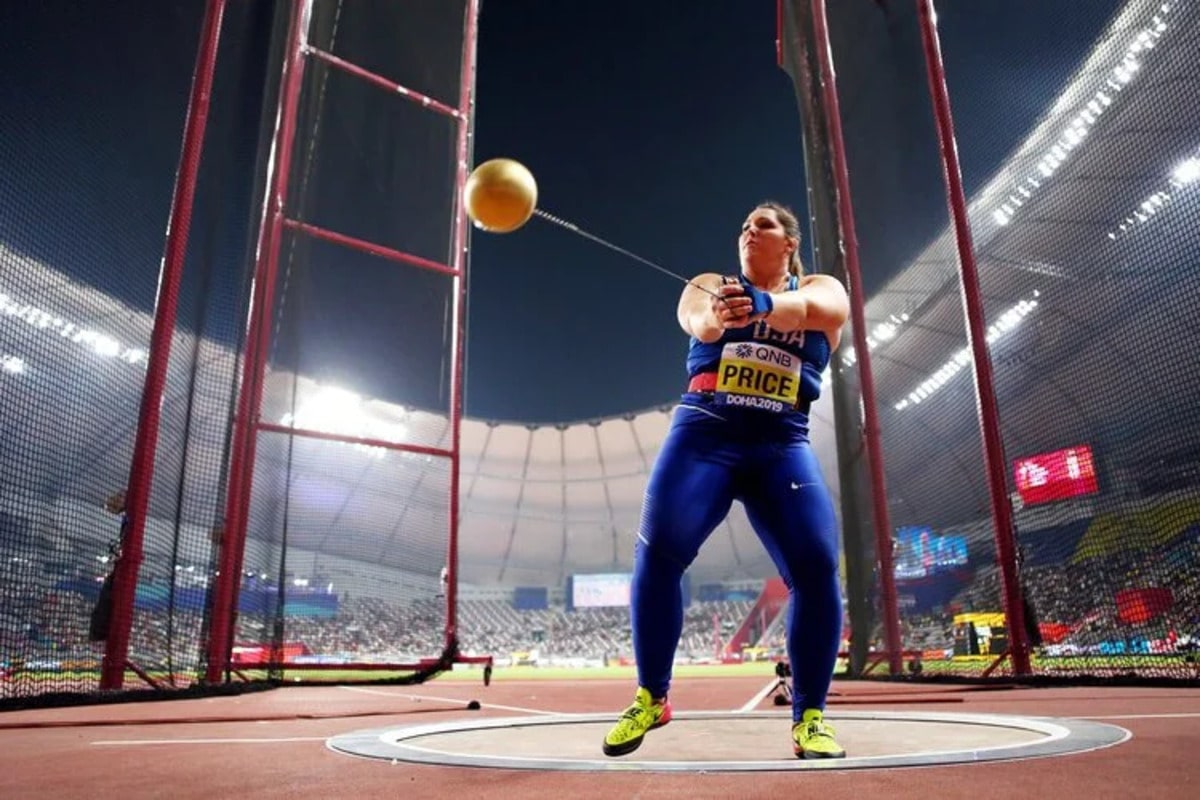Hammer throw is one of the oldest and most technical disciplines in track and field, requiring strength, coordination, and precision. It is a spectacular event where athletes must fully control their bodies while performing a complex sequence of movements. Although the name might evoke an image of a construction tool, the athletic hammer is a uniquely designed piece of equipment. Over centuries, the sport has evolved through changes in rules, equipment, and technique. Below are fascinating facts you might not have known about hammer throw.
- The origins of hammer throw trace back to Celtic warrior traditions, where heavy objects were thrown as a test of strength. In medieval Scotland, the event was part of the Highland Games, which are still celebrated today. In those times, real iron hammers with short handles were thrown. These competitions symbolized power and bravery.
- The modern hammer consists of a metal ball, a steel wire, and a grip handle. For men, the implement weighs 7.26 kilograms, while for women, it is 4 kilograms. The total length ranges from 117.5 to 121.5 centimeters. These proportions demand extreme control over every movement.
- Hammer throw made its Olympic debut in 1900 in Paris, but only for men. Women were allowed to compete in this event only in the 2000 Sydney Olympics. This was a significant step toward gender equality in sports. Since then, women’s competitions have become a regular part of major athletic events.
- Unlike discus or javelin, hammer throwers perform a series of turns inside a throwing circle. Usually, athletes complete three or four full rotations to gain momentum. Maintaining balance and not stepping outside the circle is critical. Any rule violation results in a foul.
- The throwing area is protected by a steel cage to ensure the safety of spectators and other athletes. This structure guides the hammer toward the legal sector and prevents dangerous accidents. Without such safety measures, the sport would be extremely hazardous. The cage must be strong enough to withstand powerful impacts.
- To achieve a successful throw, athletes must combine strength, flexibility, and flawless coordination. Strong legs provide a base, the torso transfers energy, and the arms control the hammer’s speed. The entire body works in harmony. Technical errors can lead to poor results or even injury.
- The men’s world record belongs to Yuriy Sedykh, who threw the hammer 86.74 meters in 1986. This record has remained unbroken for decades. In the women’s division, Anita Włodarczyk holds the record with a distance of 82.98 meters. These achievements are landmarks in athletic history.
- Hammer throwers wear special shoes with flat soles that allow smooth rotation on the concrete circle. The footwear has a low profile and aids in sliding during turns. Athletes train to execute the turning sequence to perfection. Each motion must be performed with absolute precision.
- Despite the apparent danger of the equipment, strict safety protocols are in place during training and competition. An official always supervises the throws to ensure compliance with rules. The throwing sector is isolated from the rest of the stadium. These precautions significantly reduce the risk of accidents.
- In many countries, hammer throw is introduced in youth programs using lighter equipment. This allows young athletes to learn the technique in a safe and gradual way. As they progress, the weight of the hammer increases. This staged approach promotes healthy development.
- Hammer throw requires strong mental focus, and many athletes use visualization techniques before entering the circle. They mentally rehearse the flight path and rhythm of the turns. This helps reduce performance anxiety and improves results. Mental preparation is as important as physical readiness.
- The throwing technique has evolved over the years. While two rotations were once standard, athletes now perform three or four for maximum velocity. More turns generate greater speed before release. Modern training methods have significantly contributed to this improvement.
- Elite athletes record their throws on video and analyze them to eliminate technical flaws. Motion sensors and computer simulations are also used. These tools help optimize every element of the throw. Technology has become an integral part of athletic preparation.
- At many universities, hammer throw is included in athletic scholarship programs. This gives talented athletes the chance to pursue both academic and sporting careers. In some countries, hammer throw holds national significance. The sport’s popularity continues to grow worldwide.
These fascinating facts reveal how complex and demanding the hammer throw really is. You might not have realized how much preparation, precision, and mental resilience it takes to excel in this discipline. It is not just about brute strength, but also about control, technique, and balance. Hammer throw is a sport that blends tradition with innovation in a truly remarkable way.





